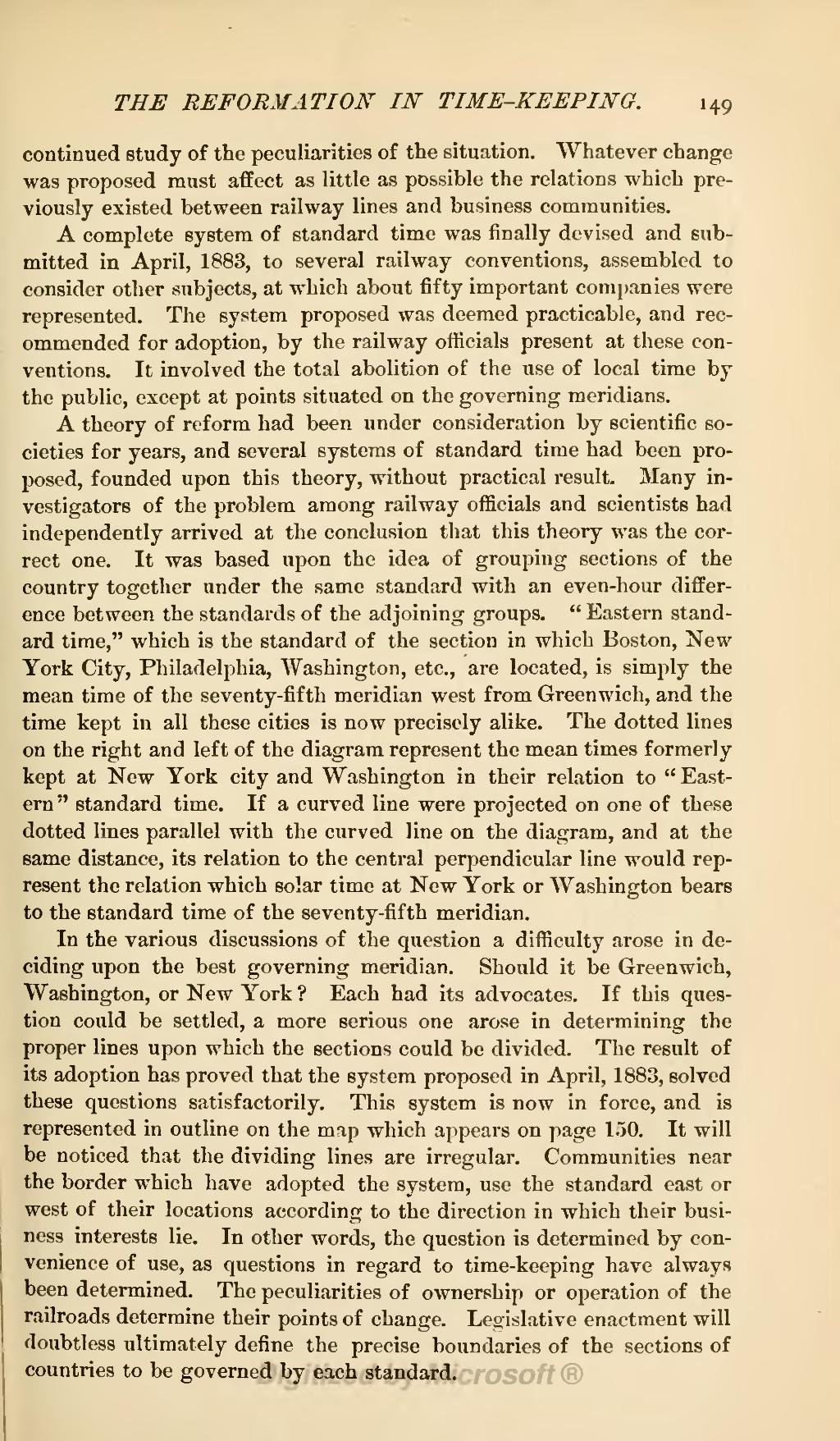continued study of the peculiarities of the situation. Whatever change was proposed must affect as little as possible the relations which previously existed between railway lines and business communities.
A complete system of standard time was finally devised and submitted in April, 1883, to several railway conventions, assembled to consider other subjects, at which about fifty important companies were represented. The system proposed was deemed practicable, and recommended for adoption, by the railway officials present at these conventions. It involved the total abolition of the use of local time by the public, except at points situated on the governing meridians.
A theory of reform had been under consideration by scientific societies for years, and several systems of standard time had been proposed, founded upon this theory, without practical result. Many investigators of the problem among railway officials and scientists had independently arrived at the conclusion that this theory was the correct one. It was based upon the idea of grouping sections of the country together under the same standard with an even-hour difference between the standards of the adjoining groups. "Eastern standard time," which is the standard of the section in which Boston, New York City, Philadelphia, Washington, etc., are located, is simply the mean time of the seventy-fifth meridian west from Greenwich, and the time kept in all these cities is now precisely alike. The dotted lines on the right and left of the diagram represent the mean times formerly kept at New York city and Washington in their relation to "Eastern" standard time. If a curved line were projected on one of these dotted lines parallel with the curved line on the diagram, and at the same distance, its relation to the central perpendicular line would represent the relation which solar time at New York or Washington bears to the standard time of the seventy-fifth meridian.
In the various discussions of the question a difficulty arose in deciding upon the best governing meridian. Should it be Greenwich, Washington, or New York? Each had its advocates. If this question could be settled, a more serious one arose in determining the proper lines upon which the sections could be divided. The result of its adoption has proved that the system proposed in April, 1883, solved these questions satisfactorily. This system is now in force, and is represented in outline on the map which appears on page 150. It will be noticed that the dividing lines are irregular. Communities near the border which have adopted the system, use the standard east or west of their locations according to the direction in which their business interests lie. In other words, the question is determined by convenience of use, as questions in regard to time-keeping have always been determined. The peculiarities of ownership or operation of the railroads determine their points of change. Legislative enactment will doubtless ultimately define the precise boundaries of the sections of countries to be governed by each standard.

